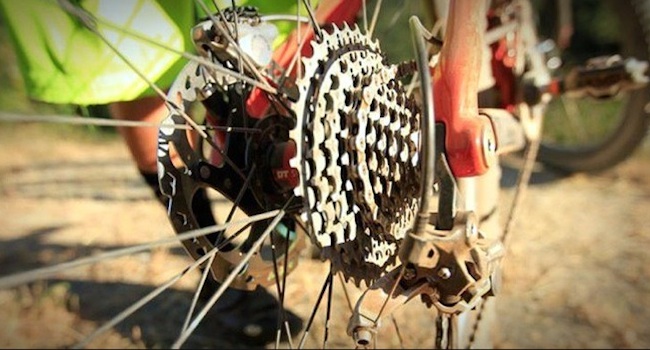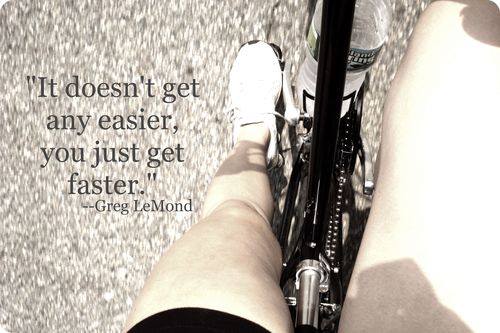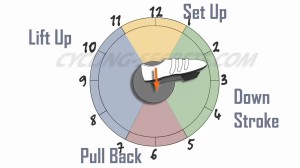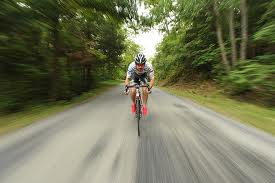Specific Situations For Gear Changes
 As a new cyclist the first step is learning how to clip in properly without toppling over. Once this skill is mastered the next step is knowing how to properly change gears. You could’ve purchased the most aerodynamic bike with amazing components, but if you don’t know how to properly utilize the shifters, you’re shortchanging yourself on speed as well as energy efficiency. Initially, it’s important to understand the anatomy of your bike gears in order to use them effectively. There are several, situations which require a change in gears for optimal performance.
As a new cyclist the first step is learning how to clip in properly without toppling over. Once this skill is mastered the next step is knowing how to properly change gears. You could’ve purchased the most aerodynamic bike with amazing components, but if you don’t know how to properly utilize the shifters, you’re shortchanging yourself on speed as well as energy efficiency. Initially, it’s important to understand the anatomy of your bike gears in order to use them effectively. There are several, situations which require a change in gears for optimal performance.
Hills/Bridges
While cycling if you are approaching a steep hill or bridge it is wise to gear down, in other words create the least resistance possible while still maintaining stability on the bike. In approaching this situation you will already feel resistance going up the hill/bridge, therefore why add more resistance by riding in a big gear? However, if your goal in that particular ride session is to build strength in the hip flexors and gluteal muscles then gearing up (riding in a big gear) allows you to pedal off the saddle and strengthen these muscles. Conversely, while you’re going downhill momentum will create very little resistance and allow you to ride faster. In this instance, gearing up is suggested in order to maintain stability on the bike, steady pedal stroke, and regain speed lost going uphill.
Tailwind/Headwind
When going into a headwind you will automatically feel a drop in speed because of the resistance going against the wind. Unless you’re an experienced cyclist this situation can be challenging for most riders. In fighting a headwind it is effective to gear down (switch into a small gear) and increase your rpms. By riding in a smaller gear with high RPMS you’ll be able to battle the headwind at a good MPH average. Also, it won’t fatigue your quadriceps as much, and it’ll reduce lactic acid buildup that would occur if you were riding in a big gear into the headwind. However, once this battle has been fought we reap the benefits of the tailwind. In a tailwind, you are receiving an extra push and thus, our speed increases. In this instance, you must take full advantage and gear up in order to gain a bit of resistance needed for stability, and increasing your average MPH significantly.
Flats & Intervals
Depending on your particular workout, riding on flats offers the opportunity to gear up unless you’re fighting a headwind. The more you ride; you will discover which gear selection is ideal for you. Usually this gear selection allows you to have some resistance to maintain stability and increase speed, but not so much that it quickly fatigues you causing you to drop in speed over time. In contrast, if you are completing interval work, gear changing is vital in order to render the results offered by this type of training. If your goal is to increase overall cadence then gearing down is best in order to allow minimal resistance and a rapid pedal stroke. However, if your goal is to build strength and muscle endurance then gearing up during your work intervals is best. By riding in a big gear your legs will increase in strength and become accustomed to a higher gear. Lastly, if you are inserting some pickups pedaling off the saddle, then gearing up is important for stability. If you do not place your bike in a big gear, the bike will be hard to control pedaling off the saddle. Also, it will inhibit you from a proper pedal stroke. In this instance, you want to create enough resistance that you feel in control of the bike and are simulating a sort of “dancing” motion with your bike.
As a new cyclist, it takes some time to really understand your gears and when to switch them for your particular needs. This can be safely accomplished when riding on an unbroken bike path. Riding on a continuous bike path allows you to play with the gear shifting and find that ideal selection for you. It’s important to note that when you are shifting gears you should continue a slow and steady pedal stroke in order for the chain to catch fluidly on the ring. Lastly, never change a gear without pedaling because this could cause you to fall, the chain to become stuck, or have the chain fall completely.

 Doesn’t everyone pedal in a circle? No, they actually do not!
Doesn’t everyone pedal in a circle? No, they actually do not! There are several ways to improve your pedaling technique.
There are several ways to improve your pedaling technique.